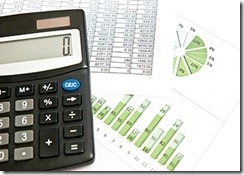As we start to move into the holiday season, it’s also the season to start thinking about closing your books for the year. This is an annual process that all companies have to perform now, unless your fiscal year does not end on December 31. The purpose of closing the books is to make sure that all the financial information about your business is accurate and entered properly. This review should happen monthly, but a final review and adjustments are necessary on an annual basis. This is the last opportunity to get it right before final annual financial statements and corporate taxes are prepared. 
Task 1: Our first step is to review all the items on the annual checklist. It should list all the items that specifically pertain to your business, and it needs to be reviewed for accuracy. Some examples of things to look for include a review of pension or other retirement funds, outstanding sales tax payments, outstanding payroll liabilities, whether physical inventory matches your books inventory, etc.
- Run reports and drill down into each account to look for data consistency. Examples of things to look for are proper revenue recognition and uniform monthly expenses for certain items.
- Review that all accounts are reconciled, including checking, savings, loans, leases, credit cards, etc. Look for any outstanding checks or un-cleared deposits that may need correction.
- Review all balance sheet accounts and verify that the ending balance on December 31 matches the balance on the official statements. Examples would be credit lines, leases, and loans, as well as confirming the asset account balances are true.
- Verify that the prior year’s balance sheet items on the tax return match the books. If they don’t it’s most likely that the adjusting journal entries from your CPA have not been entered properly.
- Review any tax consequences before year-end. For example, take into consideration reducing profits by paying out executive payroll if you have a tightly held C-corporation. Review to make sure commissions and bonuses are properly paid out. Always review with your CPA on tax strategy and with your CFO on business strategy – and those two may be different.
Task 2: Processing 1099s – The IRS requires that Form 1099-MISC forms reporting payments to vendors (other than corporations or contractors paid less than $2,000) be submitted no later than January 31. This is the time to review your data in your accounting systems to ensure you have everyone’s address and social security number or EIN number.
Task 3: Create reference copies – File copies of the final report in a PDF or printed version on your server so you can reference back if necessary. At a minimum print the Balance Sheet and Profit and Loss statement. Another important step is to password-protect the accounting systems to avoid unauthorized changes to the closed period.
Task 4: Make a backup copy – It may be wise to create a second backup of your accounting software once a year and keep those in a different location in case of a disaster.
Be sure to review with your Controller or internal accountant to make sure you didn’t miss anything, and then turn the books over to the CPA for tax preparation. This is where an Accounting Year End Closing Checklist becomes invaluable. You can review the list together and make sure that each open item has been reviewed, reconciled, and documented. This is also a good time for a risk management analysis to determine how well your books are being closed out. It should also highlight changes to consider for the coming year, such as whether you are investing enough, or whether your accounting procedures need to be tightened up.
This process ensures that financial transactions are correctly posted for the year, so if you are audited for taxes or some other reason, like the sale of the company, there won’t be any discrepancies, and you have supporting documentation.

